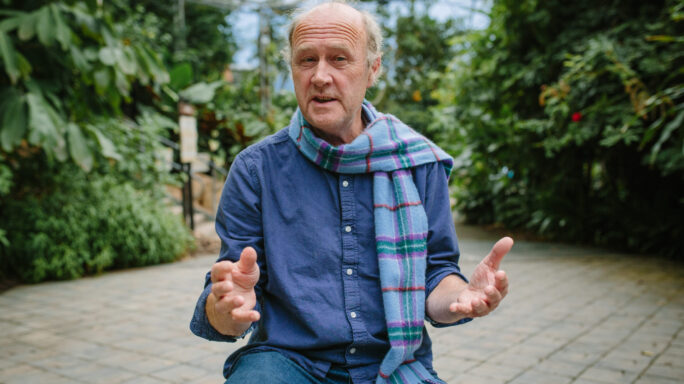Season 3: Building business resilience
Sustainability starts with a mindset shift

Responding to the climate crisis requires business leaders to shift their mindset. Embracing the need for change with hearts and minds is essential to any sustainability plan for a business.
How do I know this?
Well, this was the journey that Interface’s late founder, Ray Anderson undertook with an open mind and willingness to see the possibilities of a better way.
Today, Interface is a recognised leader in sustainability as a carbon neutral company that creates carbon neutral flooring products. We were even recognised with a United Nations Global Climate Action award in 2020.
But that wasn’t always the case.
An unlikely hero
The roots of our sustainability journey date back to 1994 and a simple question from one of our customers, “What are you doing for the environment?”
Ray Anderson didn’t have a good answer to this. Since forming Interface in 1973 and building it up to become the world’s largest and most successful carpet tile manufacturer, the environment wasn’t something he had considered.
But Ray was an engineer by trade. He was curious about how things worked and, when presented with a challenge, wanted to find smart solutions. In addition, he was a hard-nosed businessman – so any solution would need to be good for the business and help it grow.
A willingness to be challenged
Ray had the mindset needed to make a mid-course correction with Interface, by now a huge company with an equally huge carbon footprint. But before that he had to demonstrate another skill: listening.
Today, Greta Thunberg and fellow youth activists, often highlight the failure of the political and business world to recognise that the “world is on fire” and that so-called leaders don’t listen to the science.
Ray was willing to listen to the science and the critics. He was given a copy of Ecology of Commerce by the ecologist Paul Hawken and was confronted with four terms he’d never come across before: carrying capacity, overshoot, collapse and extinction; all describing the loss of a herd of reindeer due to overpopulation. He went on to learn that this was a metaphor for our planet – with fossil fuel dependency, carbon emissions, resource scarcity and pollution – leading humanity to face similar threats of overshoot, collapse and extinction.
The crux of the book was that business was the root cause of these issues, but also that it was the best hope of being the solution.
The importance of listening to critical friends
Ray went on to develop Interface’s first sustainability mission called Mission Zero. The goal was to find ways to have no negative impact by 2020. But to achieve this, he required more outside perspectives.
He assembled an Eco Dream Team to act as critical friends. From the scientific community, alongside Paul Hawken, he turned to biologist Dr Janine Benyus who has been instrumental in evolving biomimicry – the study of how we can learn from and emulate nature’s designs and processes.
With Interface’s connections to the built environment, he also turned to eco-infrastructure expert and sustainability thinker Bill Browning, the environmentalist and Forum for The Future founder Jonathon Porritt and physicists Amory and Hunter Lovins from the Rocky Mountain Institute.
Together, they used sustainability as a mirror to highlight the negative impact that Interface was having, but also how it had the potential to be a force for good.
Assembling critical friends for your company
Today the question levied at your company is likely to be around, “What are you doing about climate change and climate justice?” As leaders, you will also need to think about how to go from being part of the problem, to being part of the solution.
But when it comes to finding your critical friends, I have some good news. There are more experts and important voices to be heard today than ever before. The science and NGO community want to partner with businesses. We even see the rise of non-executive directors who specialise in sustainability.
Within your employees you will also find plenty of folk who want to learn about how their job impacts the environment and whose network could help your company.
Add in an investment community keen to support green growth and you have some good options to turn to choose from.
Look in the mirror, and assemble your team
Whether your business is already on its sustainability journey or whether it’s about to start, it’s important to be humble, listen to the science and set an ambitious goal. I recommend assembling a set of critical friends to keep on track. If you do this, your journey to becoming a sustainable, maybe even a regenerative business, will be more rapid and impactful.





Leave a comment